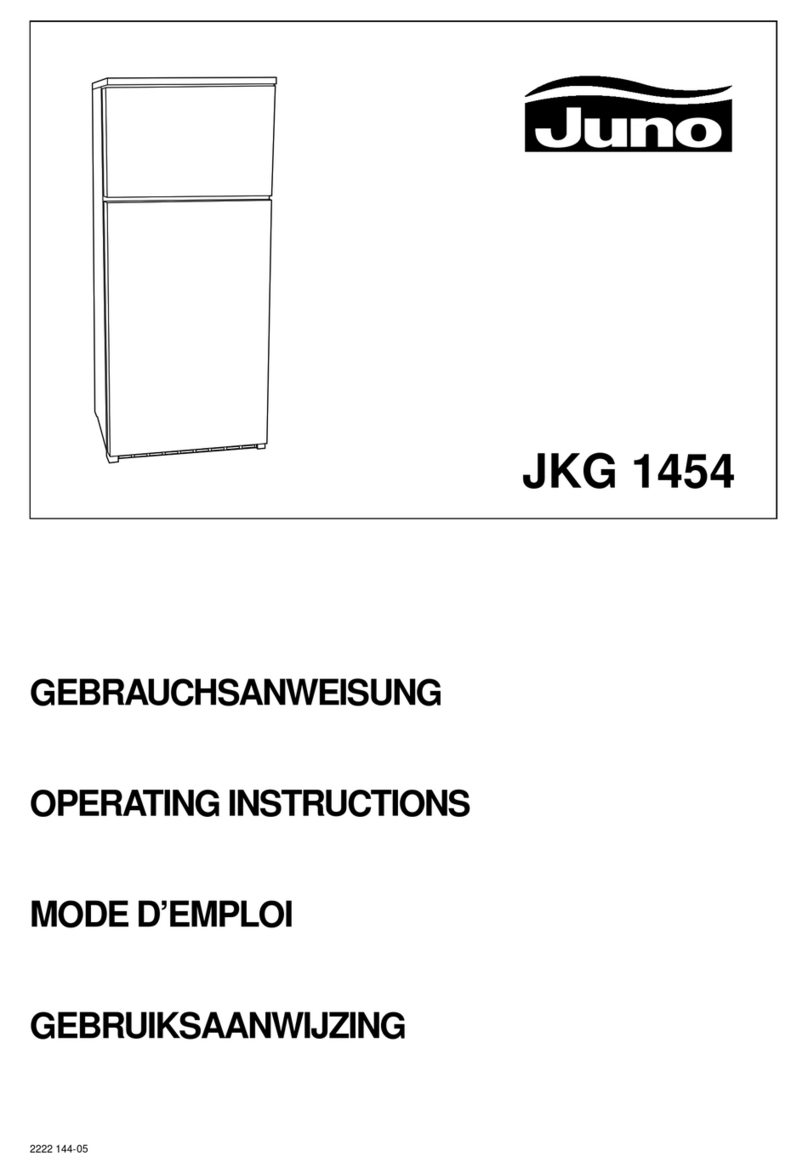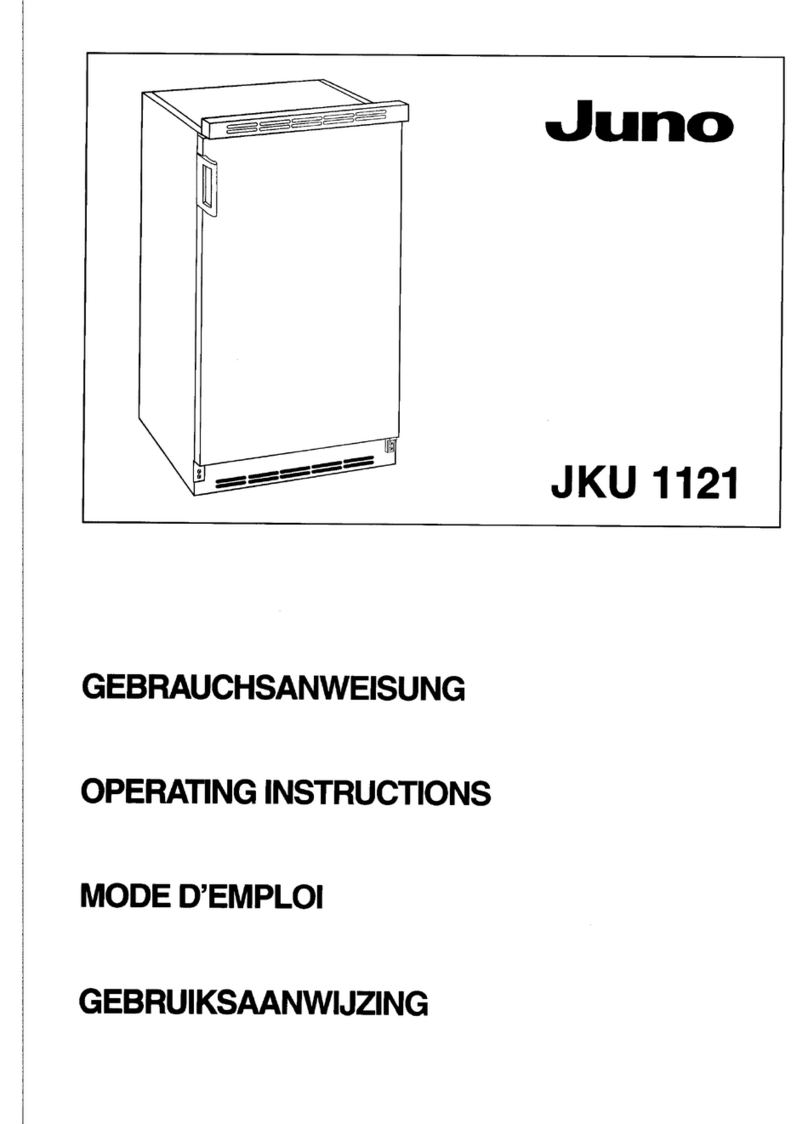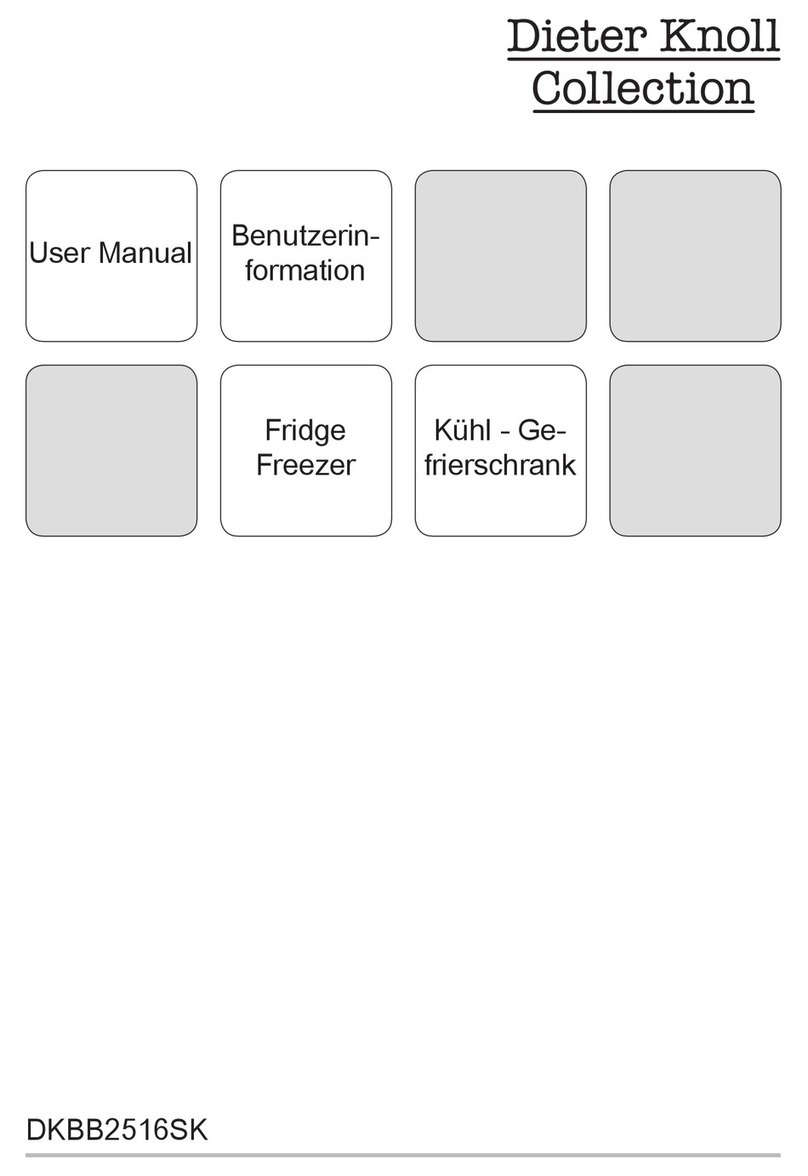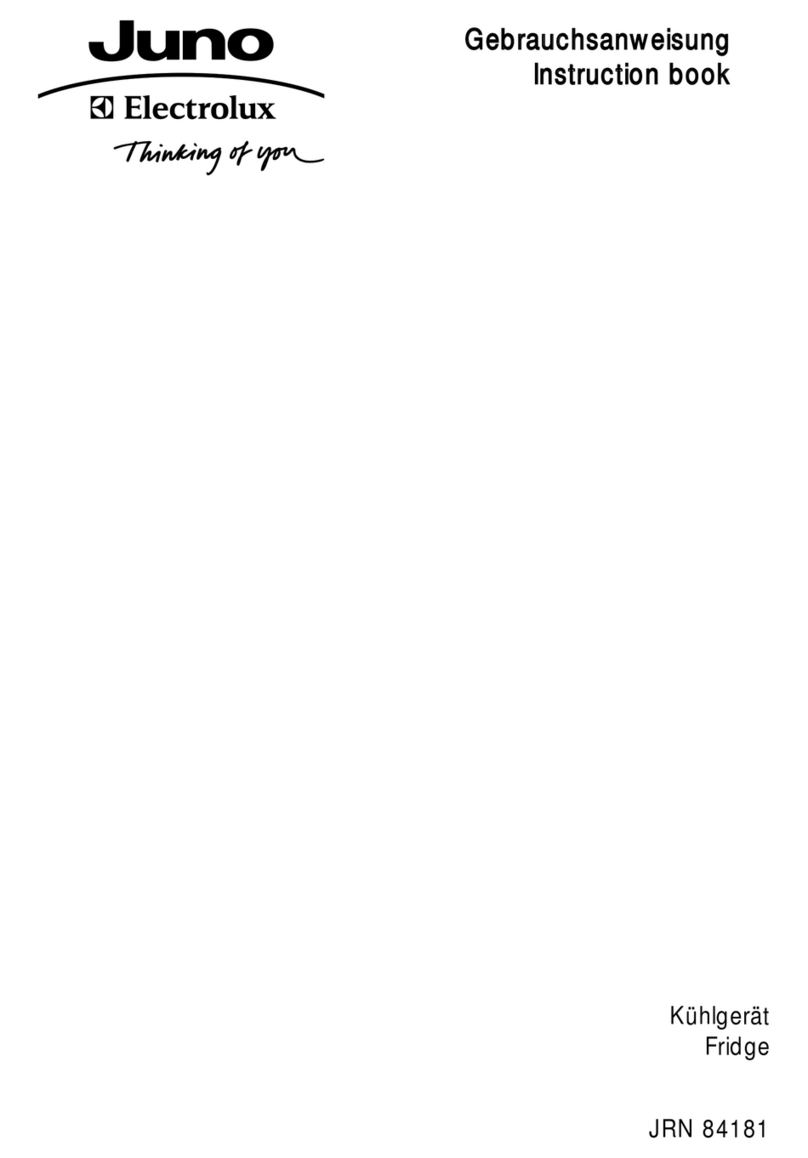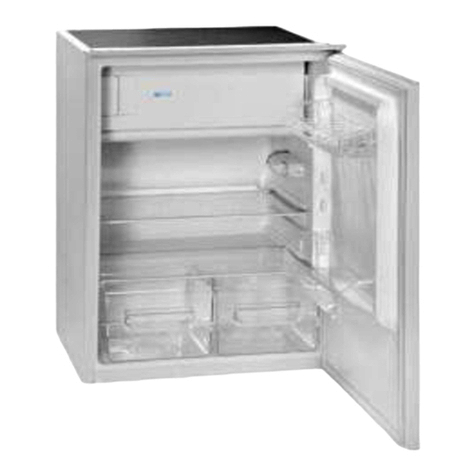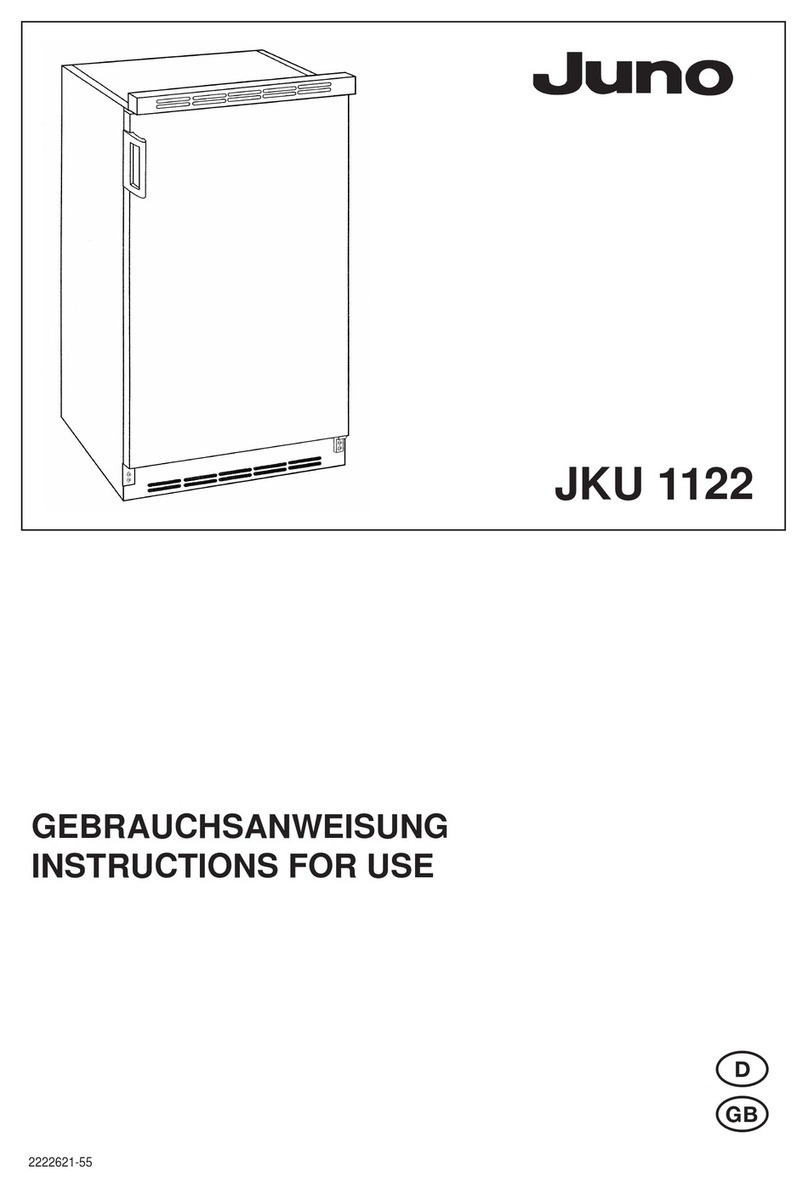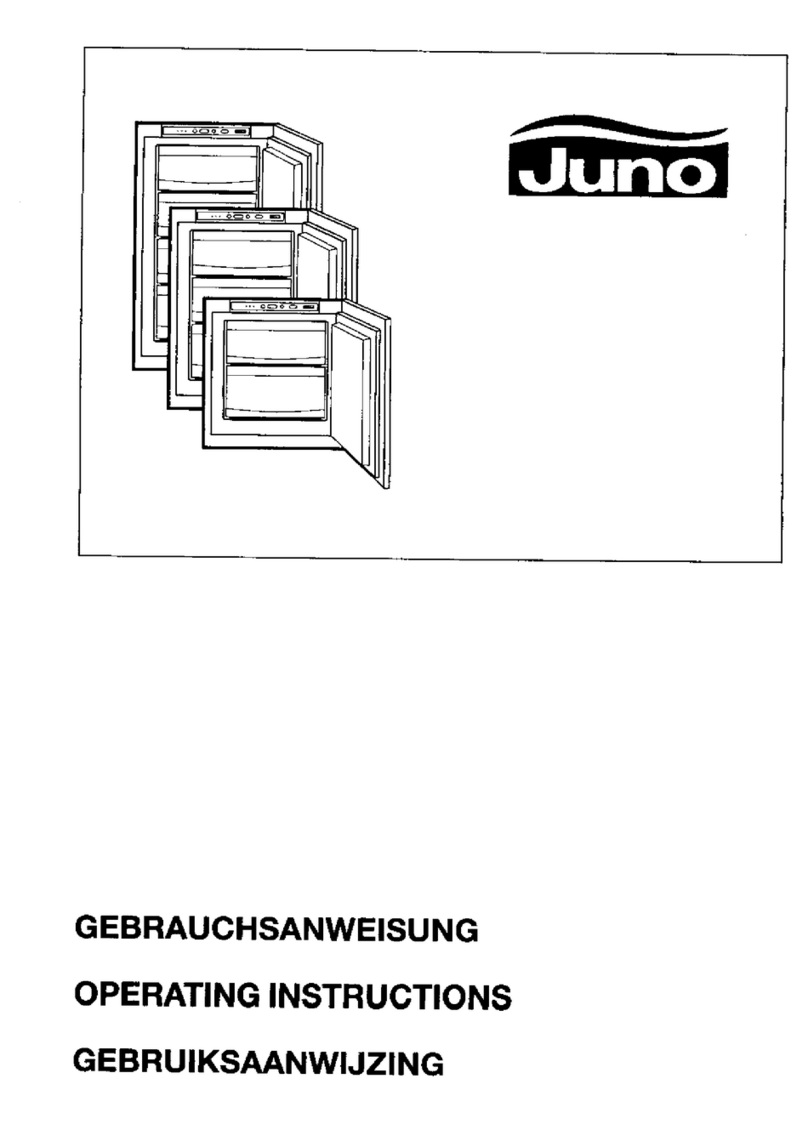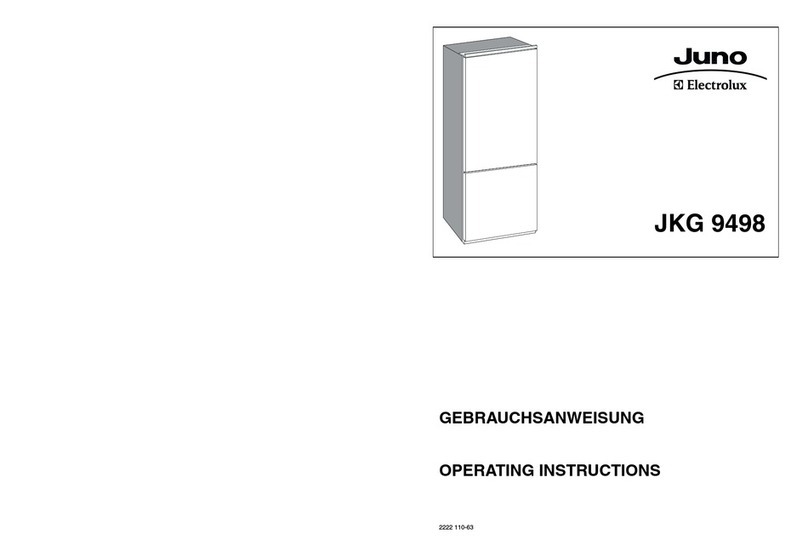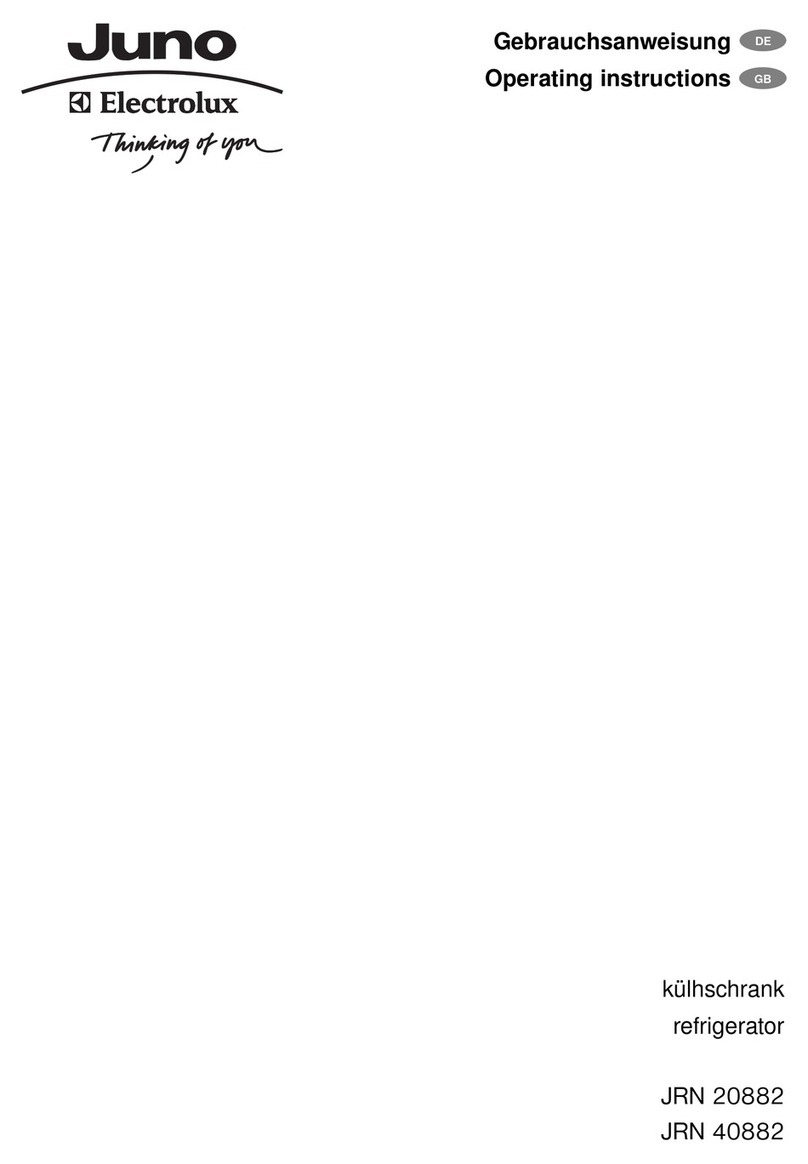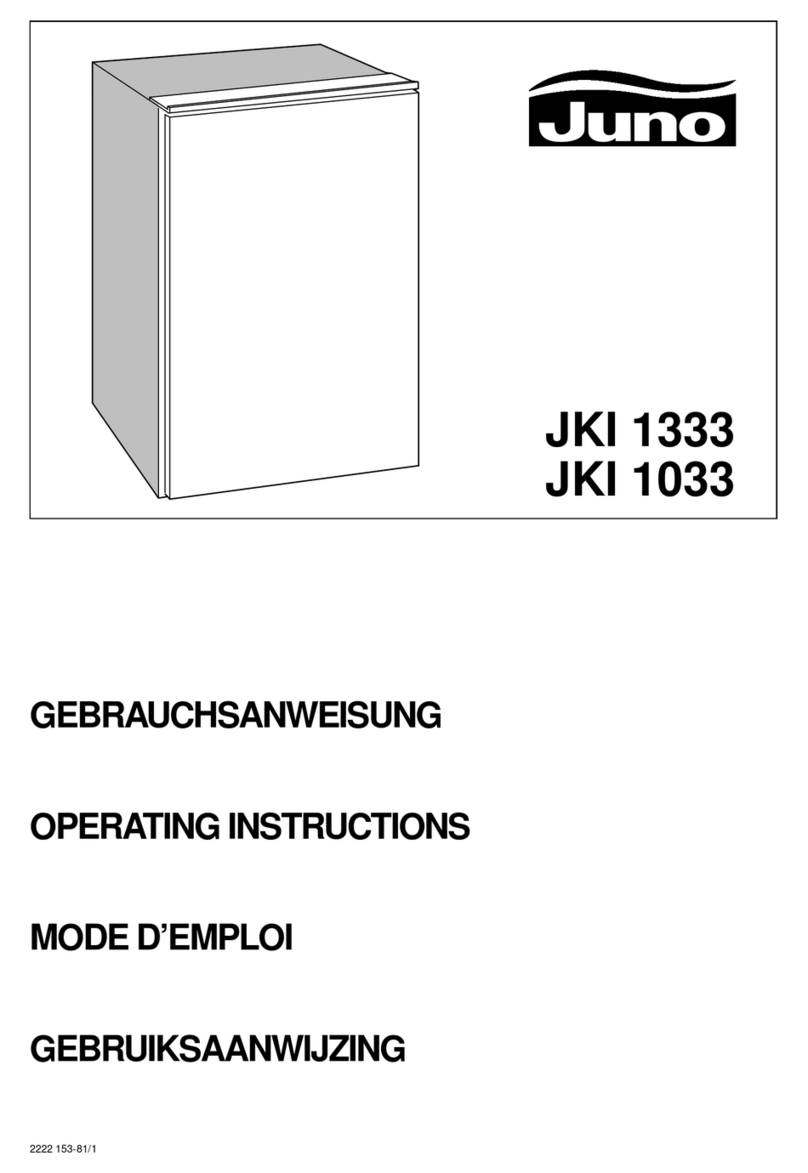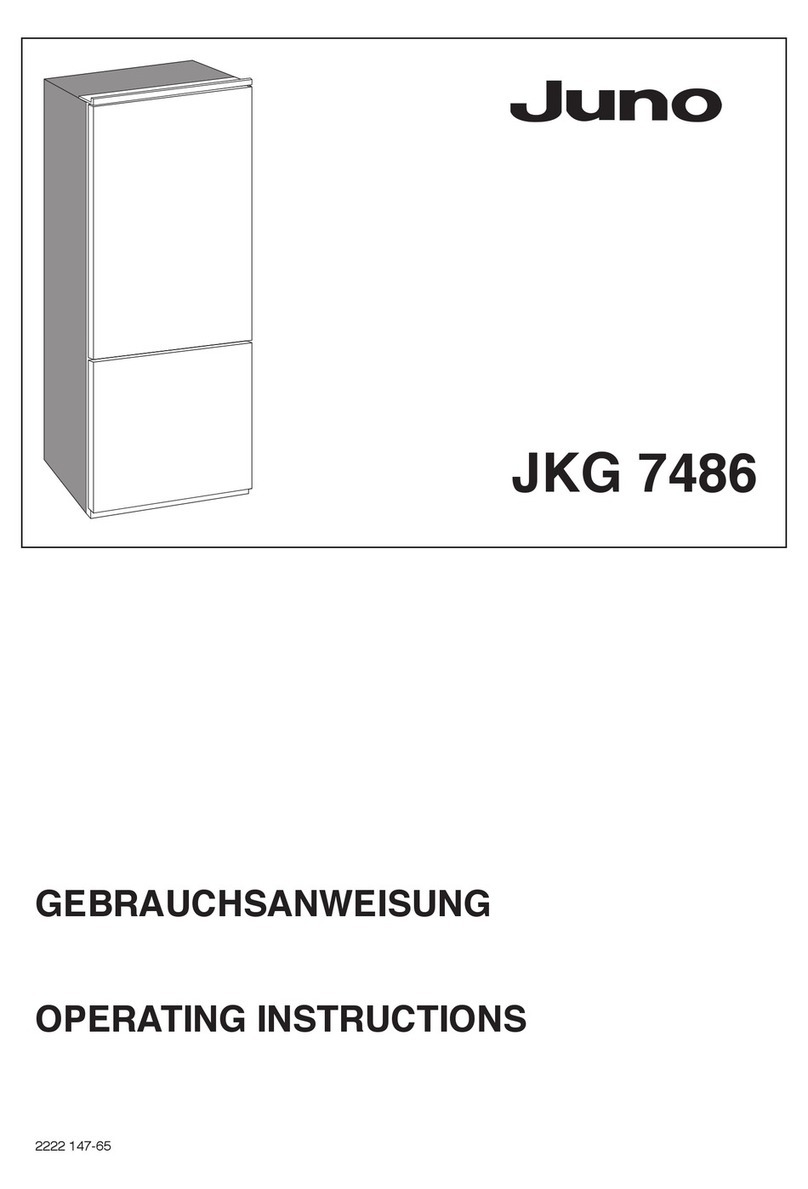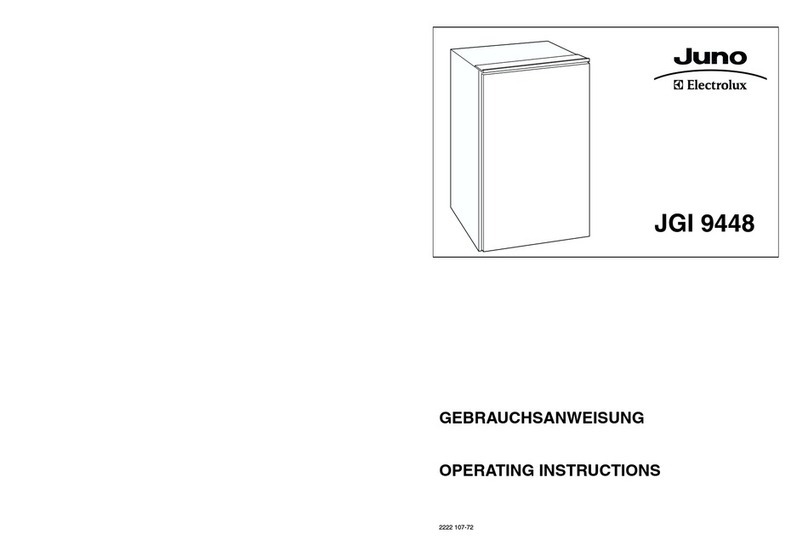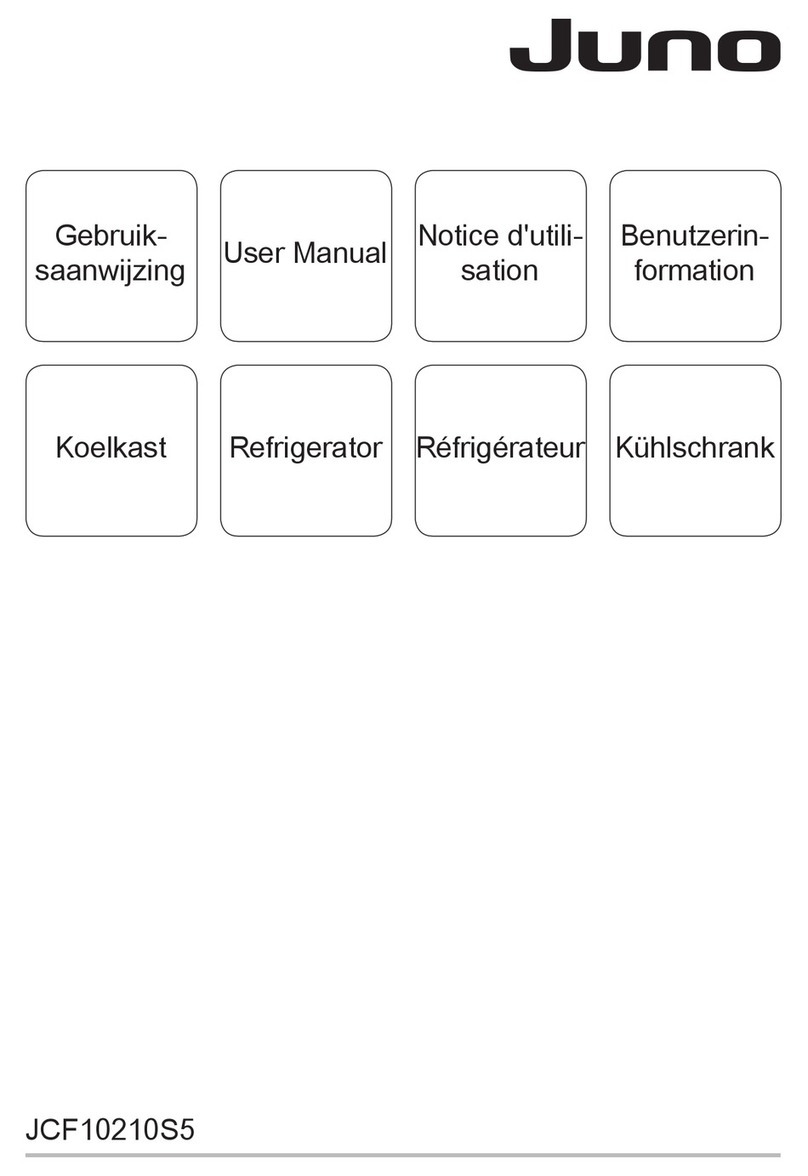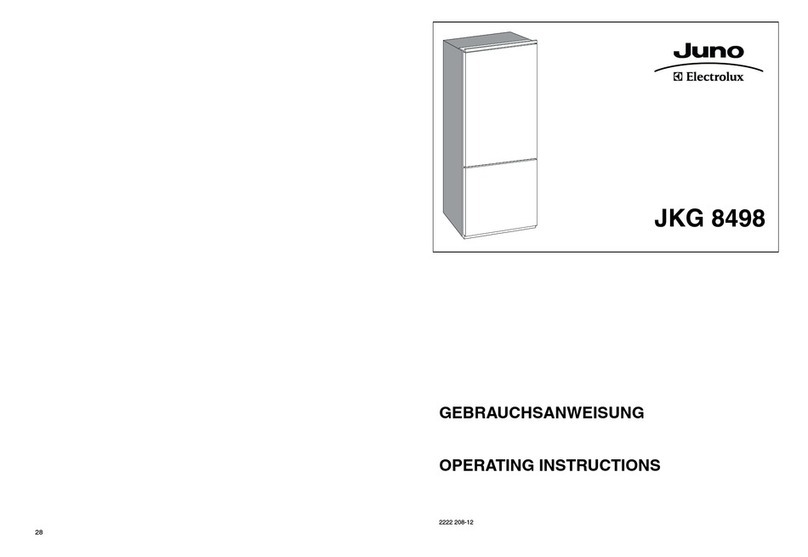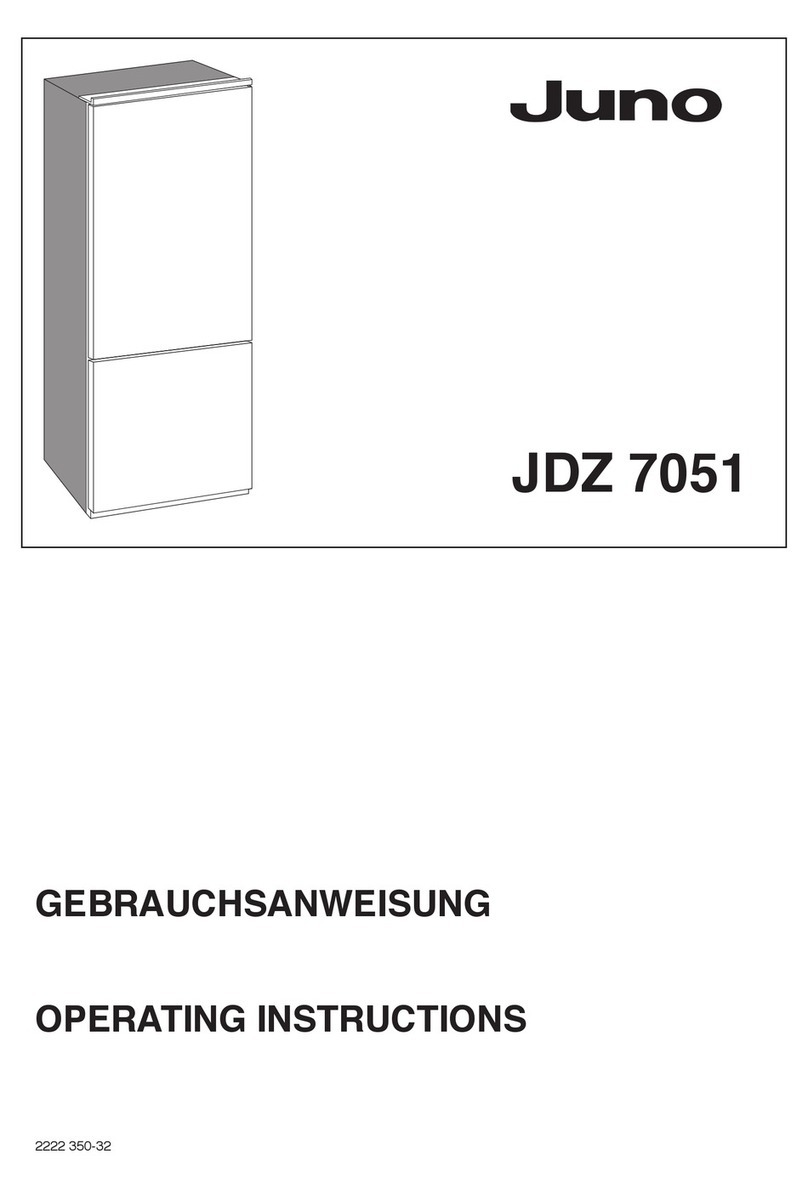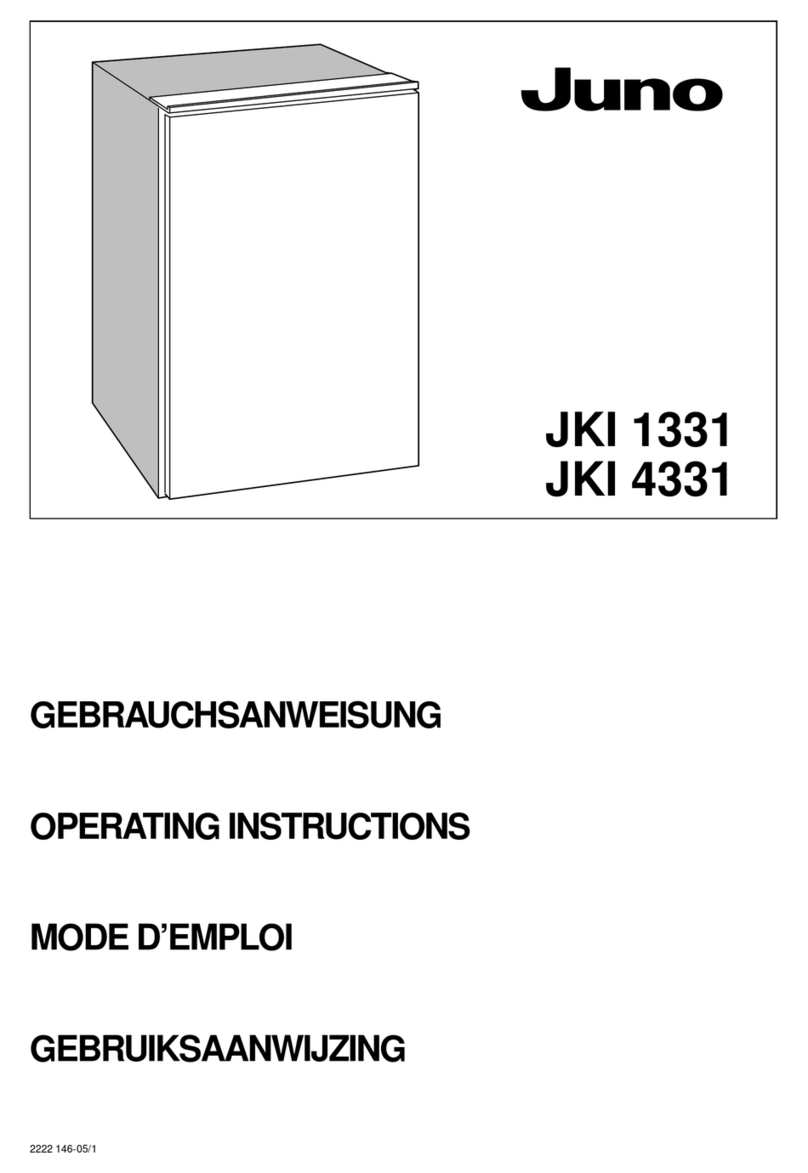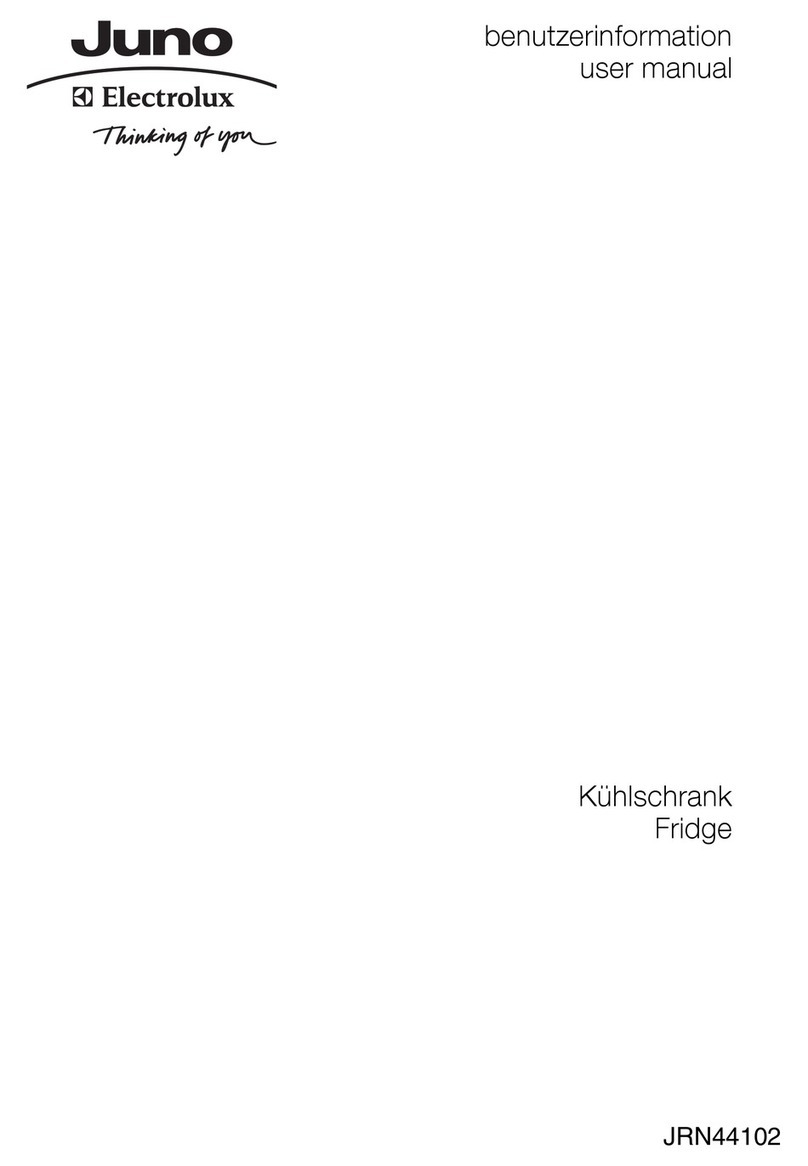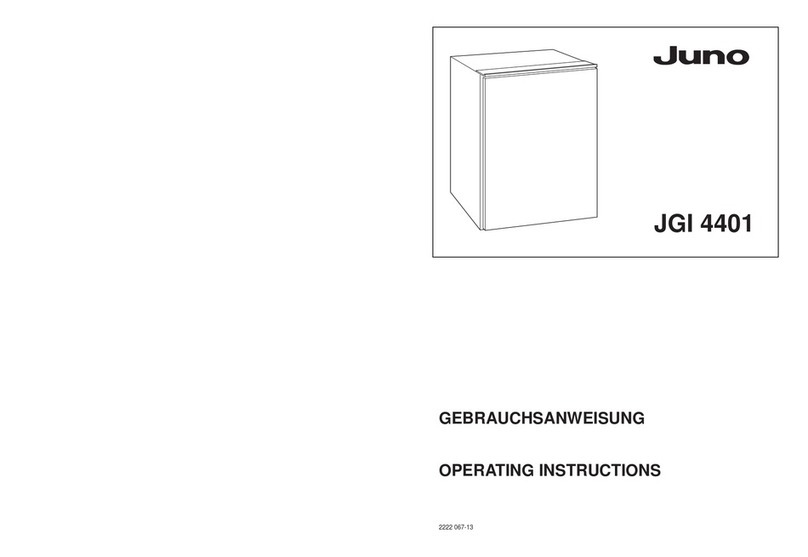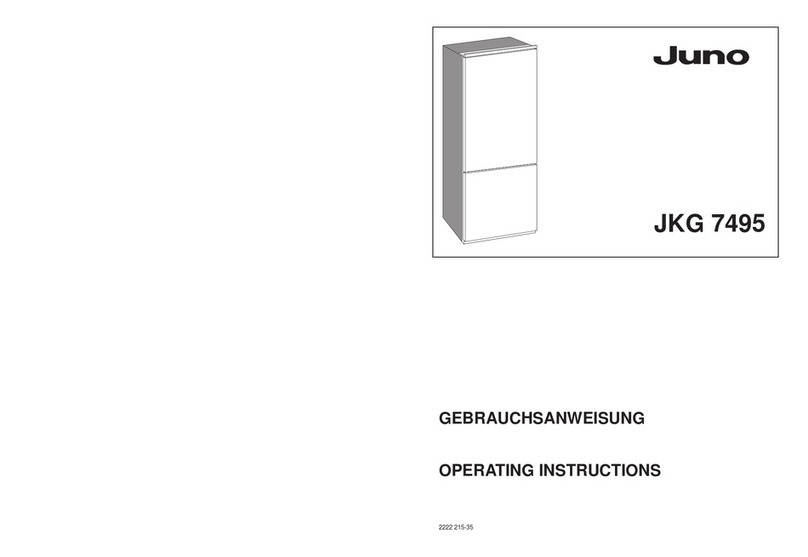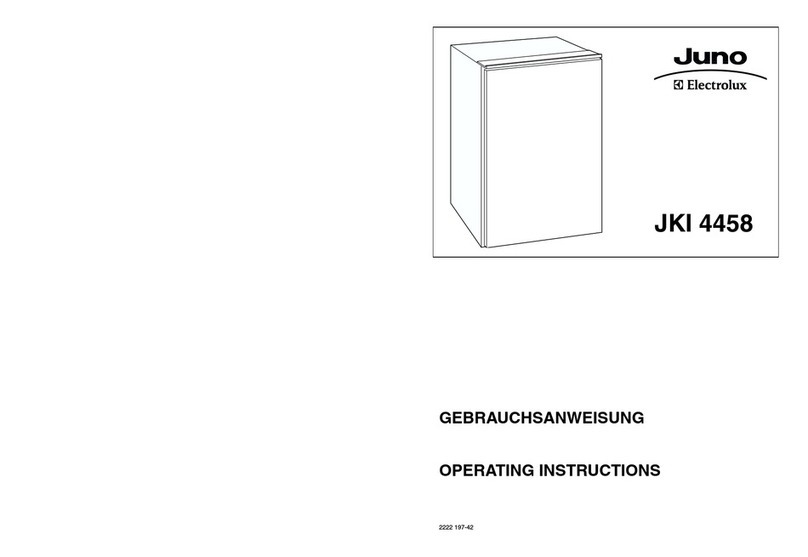20
Freezing of fresh foods
To quick-freeze foods when the appliance has not
been in use, switch on the freezer and let it run on the
quick-freeze setting for at least three hours before
putting the food to be frozen in the compartment.
If instead the appliance is already in operation, it
should run on the quick-freeze setting for at least 24
hours before the foods are put in the freezer compart-
ment.
Once the foods have been placed in the freezer, the
freezing operation can be considered to be complete
24 hours later.
Once freezing is complete, the freezer should be reset
for «normal» storage use. Food to be frozen has to be
placed in the top basket.
The maximum amount of food which is freezable in 24
hours is indicated on the rating plate. This is to be
found in the refrigerator compartment on the bottom
left-hand side.
To help you get the best out of the freezing process,
here are a few hints:
Freeze only good-quality, fresh and well-cleaned
foods.
Split them into small portions to speed up freezing
and avoid having to thaw more food than you require.
It is in fact important to remember that once the foods
have thawed out, they deteriorate fast.
Another point to remember is that lean foods keep
better and longer than fatty foods. Salt too reduces
storages time.
Wrap the foods in foil or polythene film, ensuring that
the wrapping adheres closely to the food and is well
sealed. In this way, by avoiding contact with air, the
colour, flavour and nutritional value of the foods re-
main intact.
You should never freeze all at once a greater quan-
tity of foods than the maximum indicated on the
appliance’s rating plate.
During the freezing process, do not add further foods
for freezing and do not open the freezer door.
The foods for freezing should not be placed in contact
with already frozen foods, but put in the special freez-
ing basket. This will stop the temperature of already
frozen foods from rising.
Never put fizzy drinks in the freezer as they might well
burst.
In addition, never put hot foods or liquids in the freez-
er compartment and take care not to fill recipients up
to the brim if they are covered with a lid.
It is a good idea to mark the packs – or the cards on
the sliding drawers if your model has them – with the
date on which freezing started so that you can keep a
check on storage periods.
If accidental thawing occurs – due to a power cut for
example – the foods must be used up very quickly or
else cooked immediately and refrozen. If, however, the
power failure is relatively brief (from 6 to 8 hours) and
the freezer compartment is packed full, the frozen
foods will not suffer any damage.
On the inner freezer door you will find schematic
drawings of foods and animals indicating maximum
storage time (in months) possible from the time of
freezing.
Storage of commercially frozen food
To get the best out of your freezer, in the case of stor-
age of commercially frozen food you should ensure
that:
the products have been correctly stored by the retail-
er;
that there is only a very short time between when you
purchase the products and when you put them in the
freezer;
you do not store products for longer than the time
specified by the food manufacturer.
In addition, if the freezer has been out of use for some
time, before putting the products in the compartment
let the freezer run for at least two hours on the quick-
freeze (SUPER) setting. After this, reset the freezer for
normal storage use.
Avoid opening the door too frequently and when you
do open it, leave it open only for as long as is strictly
necessary.
A word of warning about ice lollies: they should not be
eaten straight out of the freezer as this might cause
cold burns.
If there happens to be a power failure do not open the
freezer door. If the freezer is completely full, frozen
products will not be affected. Otherwise they should
be used up very quickly.
Thawing
Before being used, deep-frozen and frozen food can
be thawed out either in the refrigerator compartment
or at room temperature, depending on the time availa-
ble for this operation.
Small pieces of food – such as hamburgers, cutlets,
chips, and fish fingers, for example – can be cooked
straight out of the freezer, without any intermediate
thawing operation. Clearly, cooking time will be mar-
ginally longer than in the case of thawed food.
